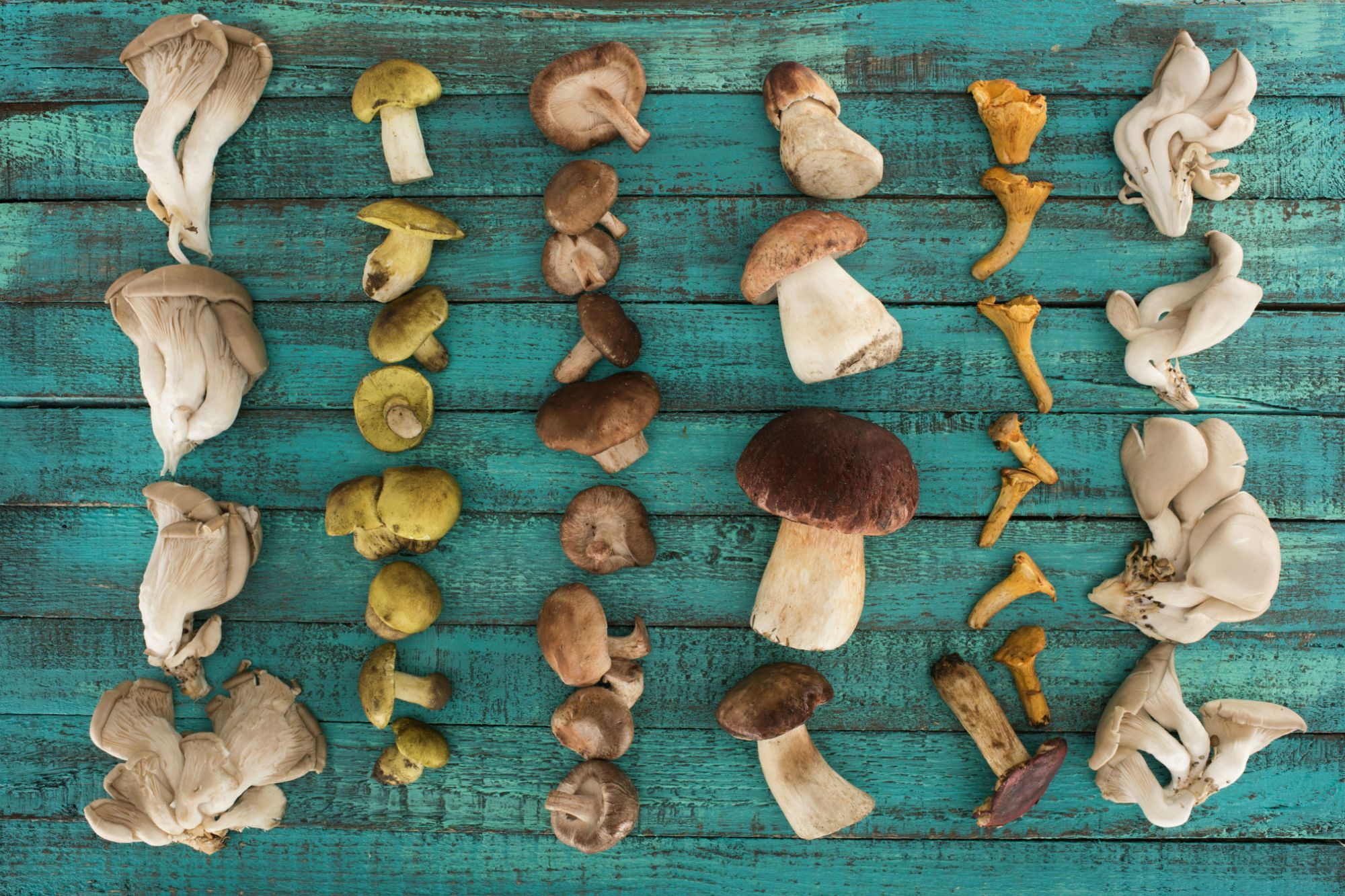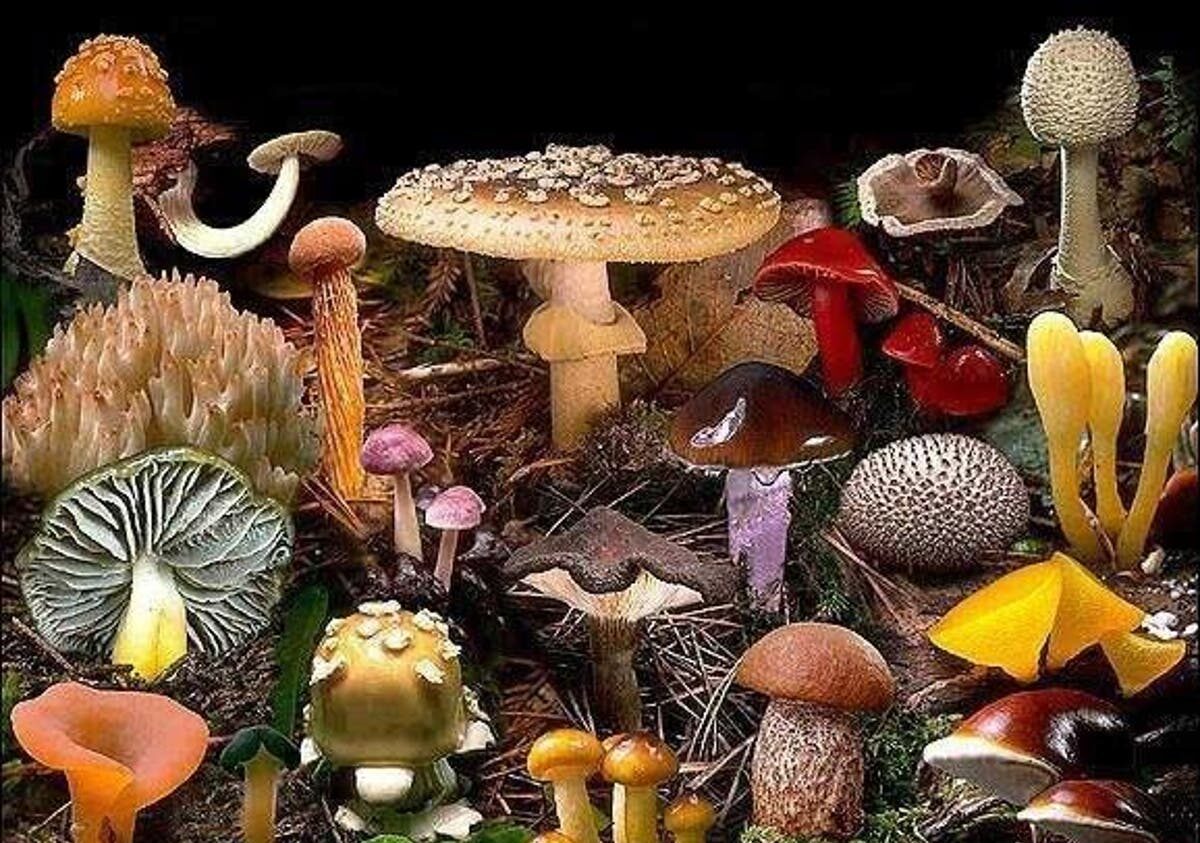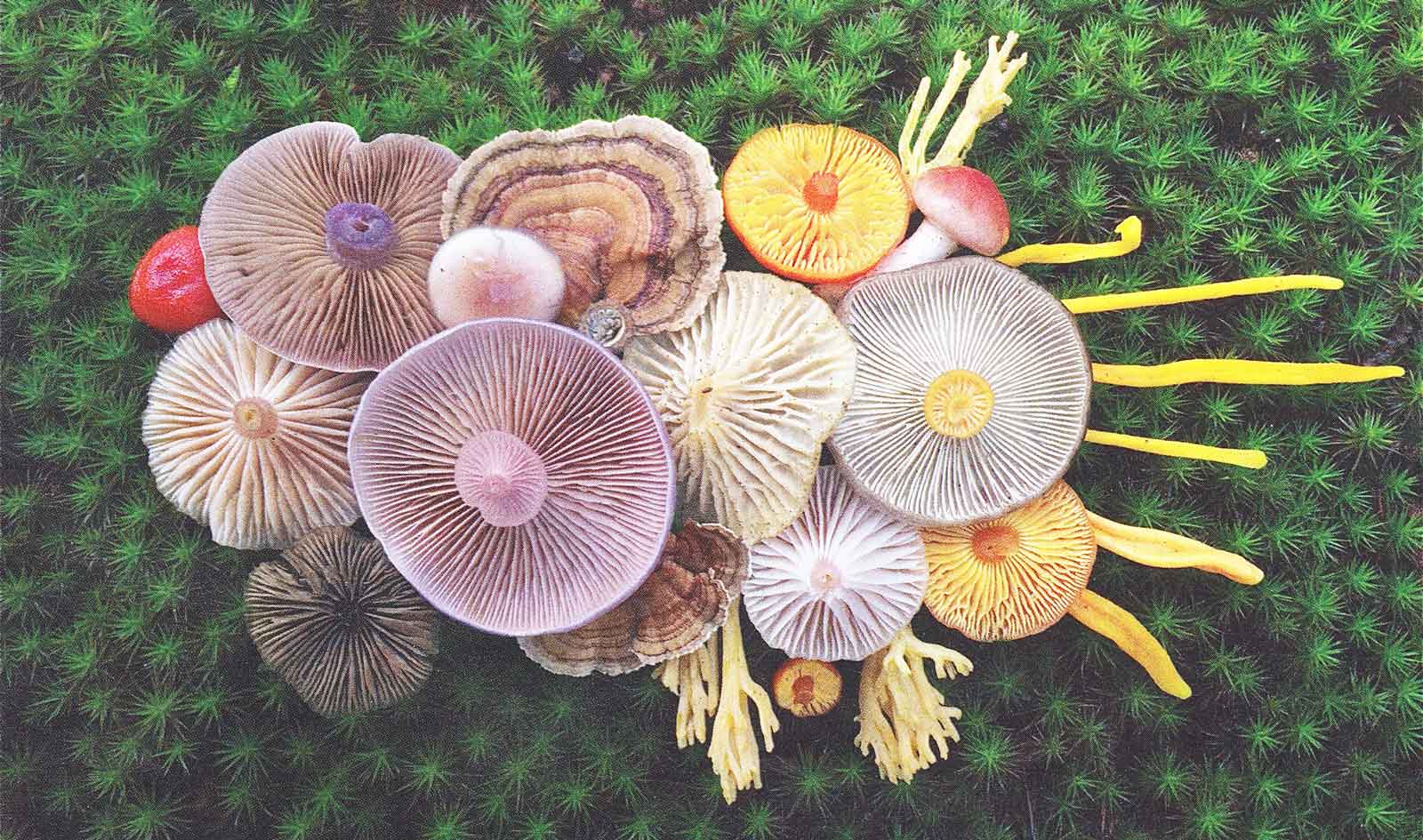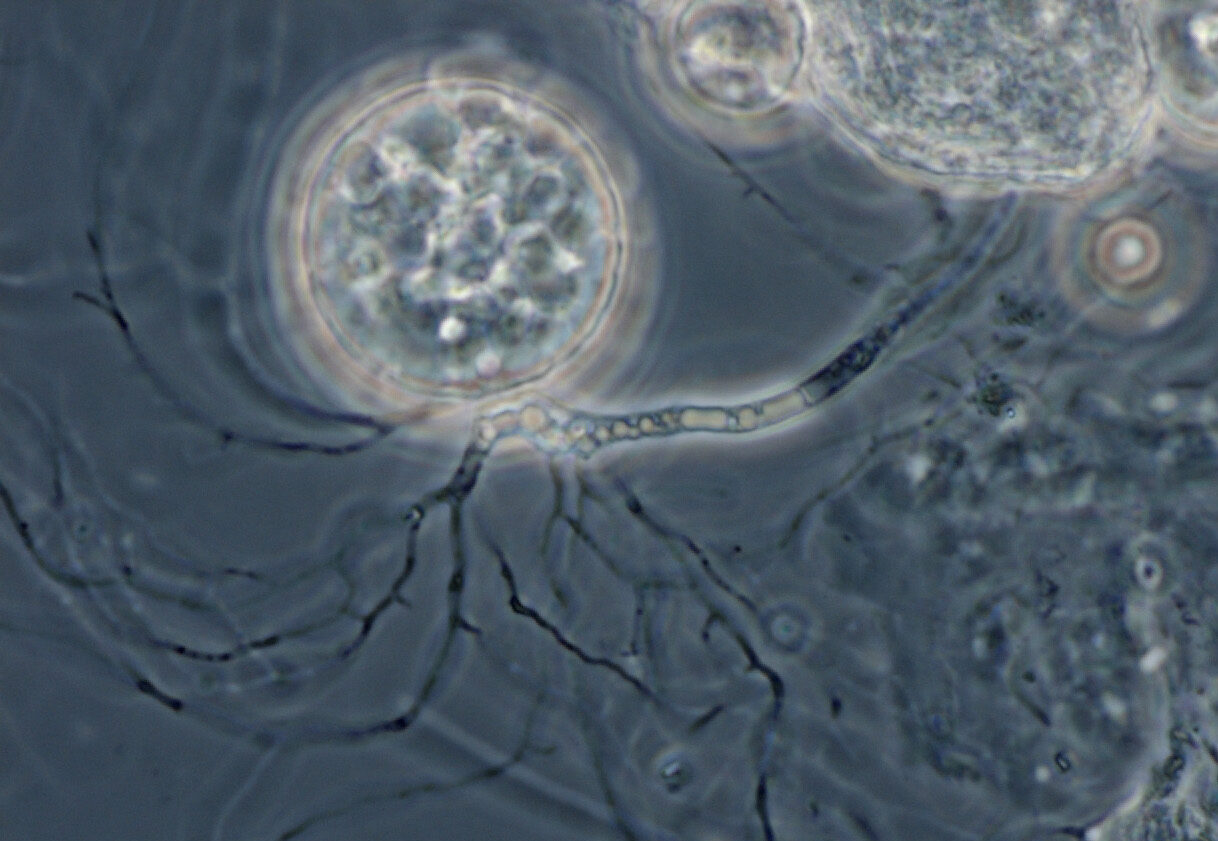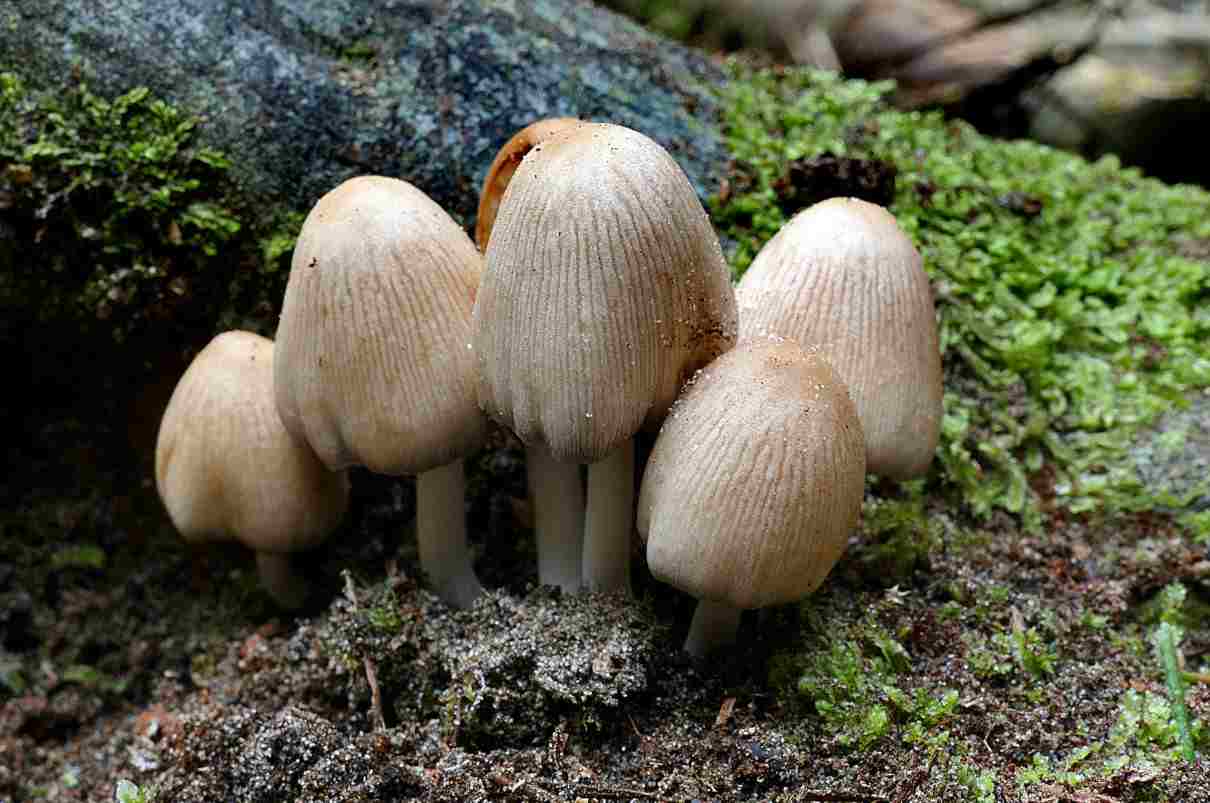There are large numbers of species of fungi divided into genera, families, orders and classes that belong to the Fungi kingdom of fungi, explain the classification of fungi Without knowing these terms it can be somewhat confusing, so each one of them will be defined in order to make a clear division of these living beings.

Species classification
Talking about the classification of fungi is a somewhat complex topic, it is like seeing a family tree with many branches, from which other small branches come out, then others and from those leaves come out and others come out of the leaves. It is necessary to understand at least a little how the entire classification of species is handled in order to understand where a species comes from, to what genus it belongs, how the classes of fungi are divided, etc.
For this, the first thing is to know that biological taxonomy is the one that has been in charge of organizing all this, that term is used to denominate in the first place the classification science (comes from the Greek taxi, meaning ordering and nomos meaning standard), secondly, when talking about biology, this science is responsible for making a classification scheme for organisms according to a designed hierarchy.
To order them, the relationship between one organism and another is taken into account, at the same time as the evolutionary history that it has had since its first discovery, in fossils or in records. In this sense, all of this has been work that has been carried out for a long time and that has made it possible to resolve the relationship between one species and another to create a manageable system, easy to remember and therefore useful for humanity.
To go to the beginning, a population is defined as a group of beings that belong to the same species, this can be the result of the offspring of one of these beings or it can be the combination with other species, thus being a species with genetic diversity . In the same way, a species can be divided into races because when one individual is observed in front of another and noticing that there are morphological differences, it can be differentiated and subdivided regardless of whether there is hybridization.
After the races, new divisions are observed that place individuals in classes, orders, families, genera, species and subspecies, this is what is observed when looking for information on an animal and its origin is shown, detailing to which class it belongs. , what family, what kingdom, etc. In fact, the organization is so detailed that a list of categories can be made:
- Domain
- Reino
- subkingdom
- Phylum, phylum or phylum (applied only to the kingdom Animalia and Protista) and Division (applied to the kingdom Plantae and Fungi)
- Subphylum or subdivision
- superclass
- Class
- Subclass
- Medals
- Suborder
- Family
- Subfamily
- Tribe
- Subtribe
- Gender
- Subgenre
- Species
- Subspecies
These categories work to organize and not to compare one species to another, but this is a debate between scientists. Due to comparison errors, it has been proposed to eliminate some of these categories and even to simplify the classification scheme of the kingdoms. This is why what is commonly handled is the domain, kingdom, phylum or division, class, order, family, genus and species.
Reino
Above the kingdom stands the domain which divides living beings into three taxa: Archaea (Archaea), some bacteria (Bacteria sensu stricto) and finally Eukaryotes (Eukarya), this according to Carlo Woese in 1990. But the domain system has some inconsistencies that reduce its use, That is why it is more common to see the classification of a species starting with the kingdom to which it belongs. The kingdom would be level two of the classification of living beings.
The kingdoms of living beings they are created from the proven evolutionary kinship between one living being and another. Formerly there were three kingdoms: animal, vegetable and mineral, however, as biology studies evolved, the division of five kingdoms began to be used due to the evolutionary relationship between species and their similarities in appearance:
- Animals: which includes animals
- Plant: This would be the kingdom of plants
- fungi: The Fungi kingdom includes fungi (molds, yeast or ferment and mushrooms).
- Protist: This is a kingdom that has many critics and debates around it, it includes all living beings that cannot be classified within the three previous kingdoms.
- monera: This includes the microscopic organisms that are found in all spaces, such as bacteria and algae.
Phylum or Division
In this third level there are two equivalent denominations used for the five kingdoms: wire (trunk or type) is used for kingdom Animalia, kingdom Protista and Monera, while division is used for kingdom Plantae, Fungi. Here the animals are divided based on their archetype, while the plants and fungi are divided by their evolutionary order.
Class
This would be the fourth level of classification of life, here the suffixes of three of the five kingdoms that are very common are established, such as opside for the plants, phyceae for alagas and mycetes for mushrooms. To place a species in a class, the common characters that it shares with another species or that differentiate it from it are taken into account.
Medals
Below class at level five is order. Here you can see divisions of the species according to their type of feeding, their evolutionary history or some physical characteristics and includes the families that are related to each other, for example: the order of primates includes the family of monkeys and lemurs.
Family
The sixth level is much more specific, families are divided according to the common traits of a group of living beings in addition to the relationship they have with each other. Above the families are the superfamilies, below them are the subfamilies, below them are the infrafamilies. The term was used for the first time to group some plants, therefore it was first used in botany (in 1689).
Gender
The term gender comes from the Latin genus which refers to lineage, in Greek it is genos and it means race, lineage. Some scientists organize species into genera in different ways, but in common the genera classify living beings taking into account three criteria: their monophyly (where all descendants of a common ancestor are included), that the genus is compact and that there are singularity in that group of individuals.
Species
The last level encompasses groups of organisms that can reproduce and procreate fertile offspring, that is, that can interbreed because they belong to the same species. At this level there is more homogeneity than in the previous categories, although variations can be seen in the appearance or behavior of an individual within the species.
At this point it can be believed that a species is a set of individuals that share identical characteristics because they are immutable, that is, their characteristics are maintained constantly over time (assuming that the Species extinction nor the isolation of beings), this would be how one species would differ from another. However, this would really be an inbred line or a group of clones not a species. That is why within this level you can see some subspecies.
In some cases the names of the individuals respond to their species, for example the Lion, but in other cases two words are used to name them that also respond to their gender, for example, homo sapiens.
There are several species concepts that serve in each case to determine how a species is delimited and what criteria are used to define them, these can be:
- biological species
- evolutionary species
- morphological species
- Phylogenetic species
- ecological species
- nominalist species
fungi kingdom
Clarified everything about the classification of living beings, some characteristics of fungi will allow us to know them better. They belong to the Fungi kingdom, previously they entered the plant kingdom but they differed from plants because fungi have heterotrophic nutrition. At the same time, when it was observed that they have cell walls that have chitin and not cellulose, they separated from animals but are more closely related to them today.
Fungi, in addition to contributing to nature, have an important economic participation (as does the animal kingdom and to a certain extent the plant kingdom), truffles, for example, are mushrooms that are collected very frequently, yeasts are cultivated because they ferment beer and bread, some species of fungi are used to produce antibiotics, mycotoxins, alkaloids and to control pests.
How are fungi classified?
The first classification of fungi is based on the environment in which they are found and their relationship with it, in this way four divisions are made:
- Saprophytes: Which would be those fungi that feed on the residues of other organisms (corpses, excrement, dead leaves and plants, etc.)
- Lichenized: They would be those fungi that are born from the symbiosis with an algae or a cyanobacterium.
- Mycorrhizal: This includes fungi that are born from symbiosis with the root of a plant.
- Parasites: Fungi that are also born from a symbiosis but depend on their host and damage them until they die or move.
Actually, it has been sought to organize them by groups depending on their sexual reproduction, so that relatives can be found and easily identified. However, there are some species with asexual reproduction (the artificial class Deuteromycetes). However, the second classification of fungi that was made was due to the differentiation that was noted as they differentiated with protist or chromist organisms, this could be considered as an old scheme previously handled:
- Mucilaginous fungi: Myxomycotes and Plasmodiophoromycotes
- Absorbotrophic fungi: Oomycotes and Chytridia
- Eumycote fungi: Zygomycetes, Ascomycetes and Basidiomycetes
Then, for 2015, an update of this classification of fungi was made, making a simpler one that brought together all the classes of fungi studied in five main divisions, these would be:
- Basidiomycetes: This group is often mentioned because it encompasses a wide evolution, housing several species within it. Includes fungi such as mushrooms and those with caps that can be eaten, and
- Ascomycetes: Another division of fungi that is also very broad, in fact it may be more so, includes mushrooms and molds that reproduce asexually and sexually.
- Glomeromycetes: A large part of the Glomeromycetes fungi reproduce in an unknown way and share the symbiosis as a form of birth, some are born from plants and others from residues.
- Zygomycetes: In this group there are also species that reproduce sexually and asexually, their diet can be based on plants and animal residues or excrement. The black mold that reproduces on bread is part of this group.
- Chytridiomycetes: Here are the microscopic fungi within which there are species that are included in the kingdom of protists by some scientists.
From there other groups arise based on monophyletic groups that, as mentioned above, have a common evolutionary history by a main ancestor, each group corresponds to its descendants. Many scientific books and articles divide fungi according to a common point, it can be the environment and its relationship or it, monophyletic groups, a classification by phylogenetic relationships or variations of these three.
Current classification of fungi
At first three main types of fungi were mentioned, mushrooms, yeasts and molds. Yeasts are characterized because they are fungi that do not create networks of filaments but grow in a unicellular way, in addition to that when fermented other compounds decompose and produce other substances. Yeasts reproduce asexually, they do so by budding and budding.
Molds are characterized by staying in a humid environment and low light, such as yeasts, however, their reproduction occurs in warm and humid places to generate spores that can survive in a large number of spaces with differences in temperature and other environmental conditions.
Thus it is natural to see molds on walls, on plants, on trunks, on foods such as fruits, cheese, bread, vegetables, they can grow on animal and human excrements, on mushrooms, there are even fungus in dogs.
Mushrooms are fruiting bodies that are producers unlike molds and yeasts. They can generally be seen to increase in size when they are in humid and shady places. There are many species of mushrooms, which can be edible, poisonous or can cause psychoactive effects in animals and people.
microscopic fungi
Among the classification of fungi with microscopic characters, the following divisions can be found that contain mushrooms that are differentiated by the color of their wives, thus dividing into more than 40 mushrooms with wives of different colors, that is, more than 40 species.
- Leucospores
- Melanosporeans
- rhodospores
- Ochrosporeans
- Ianthinosporeos
- Chlorosporeos
macroscopic fungi
Two great classes are divided to organize the fungi with similar macroscopic characters, the Basidiomycetes and the Ascomycetes. The names of two levels of subdivisions of these classes will be specified to give an idea of the number of species that are grouped here.
- Basidiomycetes: This class of fungi includes three main subclasses: Hymenomycetidae, Phragmo-basidiomycetidae y Gasteromycetidae. The first class includes six orders of fungi: The Agaricales, Boletales, Dacryomycetales, Polyporales, Poriales, Russulales, from which the following families and species arise.
The Order Agaricales has the following families:
- agaricaceae
- amanitaceae
- Bolbitiaceae
- coprinaceae
- cortinariaceae
- crepidotaceae
- entolomataceae
- Hygrophoraceae
- Omphalotaceae
- pluteaceae
- strophariaceae
- Tricholomataceae
Order Boletales has the following families:
- boletaceae
- Gomphidiaceae
- Hygrophoropsidaceae
- paxillaceae
The Dacryomycetales order has the family: Dacryomycetaceae and the Polyporales order has: Polyporaceae. Meanwhile the order Poriales has the following families:
- bankeraceae
- Cantharellaceae
- Clavariaceae
- clavulinaceae
- Ganodermataceae
- Hydnaceae
- Hymenochaetaceae
- poriaceae
- ramariaceae
- schizophyllaceae
- Stereaceae
- Thelephoraceae
The order Russulales has the family: Russulaceae. On the other hand the second class called: Phragmo-basidiomycetidae it has the order Auriculariales with the family: Auriculariaceae and the order Tremellales with the family: Tremellaceae. The third class called: Gasteromycetidae It has seven orders: Hymenogastrales, Lycoperdales, Melanogastrales, Nidulariales, Phallales, Sclerodermatales, Tulostomatales.
The order Hymenogastros has the family: Rhizopogonaceae.
The order Lycoperdales contains the families:
- geastraceae
- lycoperdaceae
- Mycenastraceae.
The order Melanogastros has the family:
- Melanogastraceae and the order Nidulariales to the family: Nidulariaceae.
The order Phallales has the families:
- clathraceae
- Phallaceae
The order Sclerodermatales to families:
- astraaeaceae
- Sclerodermataceae
- Sphaerobolaceae
Finally, the order Tulostomatales has the family: Tulostomataceae. Each of these families may contain from one to ten species. Adding more than 100 species of fungi within this class nothing more.
- Ascomycetes: It is a much smaller class for this record, however many biology books that classify fungi include a large number of fungi within this class to the point of surpassing the Basidiomycetes class. Within this group there are six orders: Clavicipitales, Helotiales, Hypocreales, Pezizales, Sphaeriales, Tuberales.
The order Clavicipitales only contains the family: Cordycipitaceae, while the order Helotiales has the families:
- Geoglossaceae
- Leotiaceae
- Sclerotiniaceae
The order Hypocreales contains the family: Hypocreaceae, the order Sphaeriales the family: Xylariaceae, the order Tuberales the fungi of the family Tuberaceae, and the order Pezizales contains the following families of fungi:
- Ascobolaceae
- helvellaceae
- Humariaceae
- Morchellaceae
- Pezizaceae
- sarcoscyphaceae
Only in these seven orders are grouped more than 20 species of fungi and only the orders of the families of macroscopic fungi have been specified.


